A project by –
JC Niala, Julia Utreras & Sam Skinner
In collaboration with Greenpeace
Waiting
List
STATISTICS – A COMMUNITY OF GROWERS IN WAITING
We contacted all 378 councils in Great Britain using Freedom of Information requests to find out how many people are on allotment waiting lists. Search the data below.
Note: our data doesn’t include locations where allotment associations and parish councils manage waiting lists, and many lists are closed – so the national total is likely to be much higher.
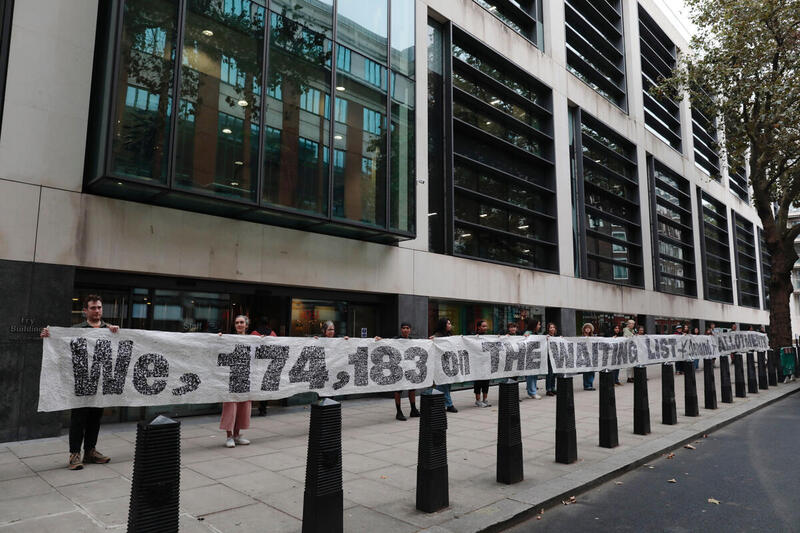
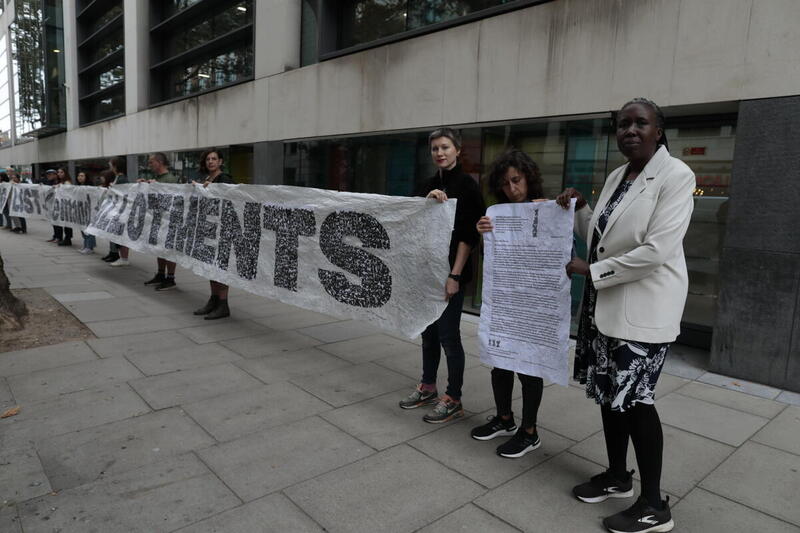


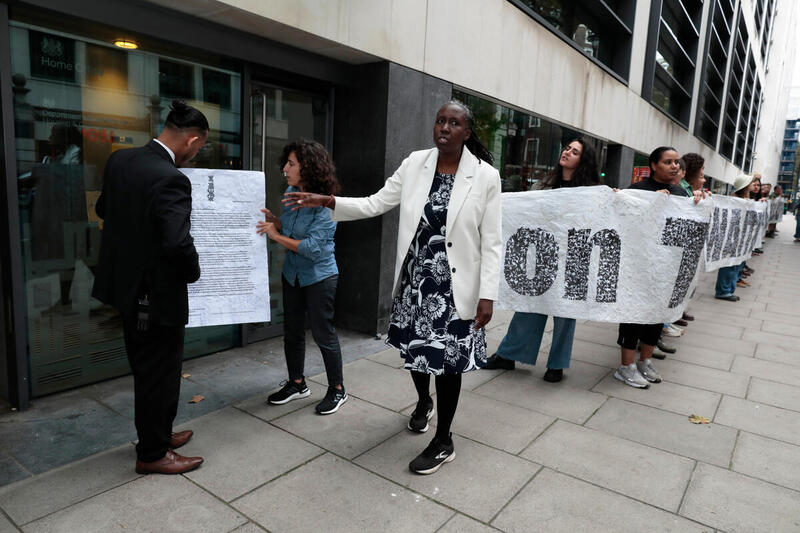
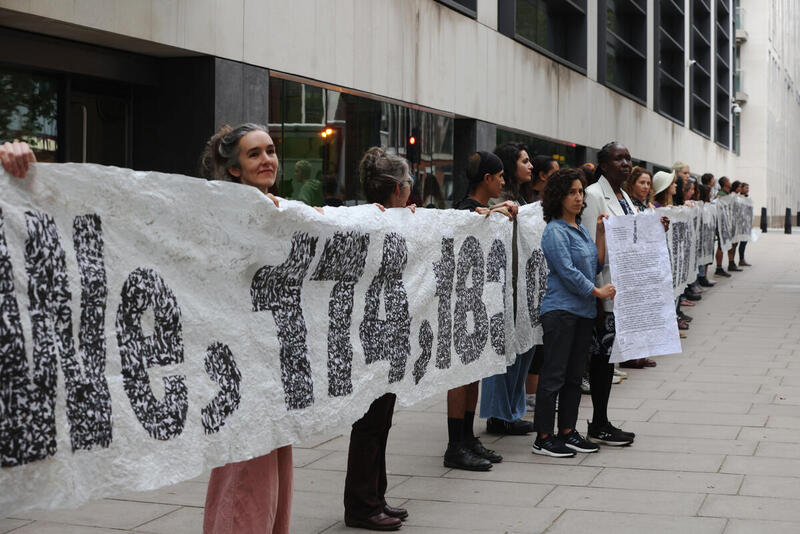
THE RIGHT TO LAND, TO GROW, TO AN ALLOTMENT
We transformed waiting list data into a huge allotment-sized artwork made of seed paper and presented it at the Department for Levelling Up, Housing and Communities in London, which is responsible for local councils. By making a demand for more allotments on behalf of those on waiting lists we were enacting en-masse a right enshrined in the 1908 Allotment Act; if 6 or more people from different households demand an allotment the local government is duty bound to act.
In the context of government cuts to local authorities, it is vital sufficient funding is also provided for them to do this. See our letter to Micheal Gove here.
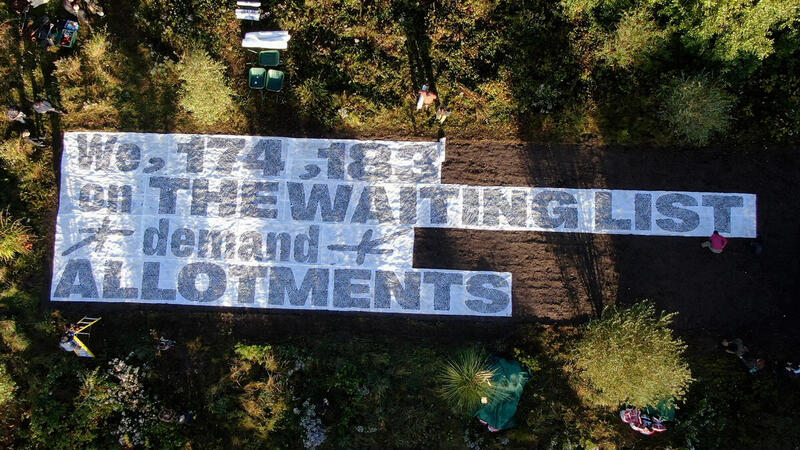
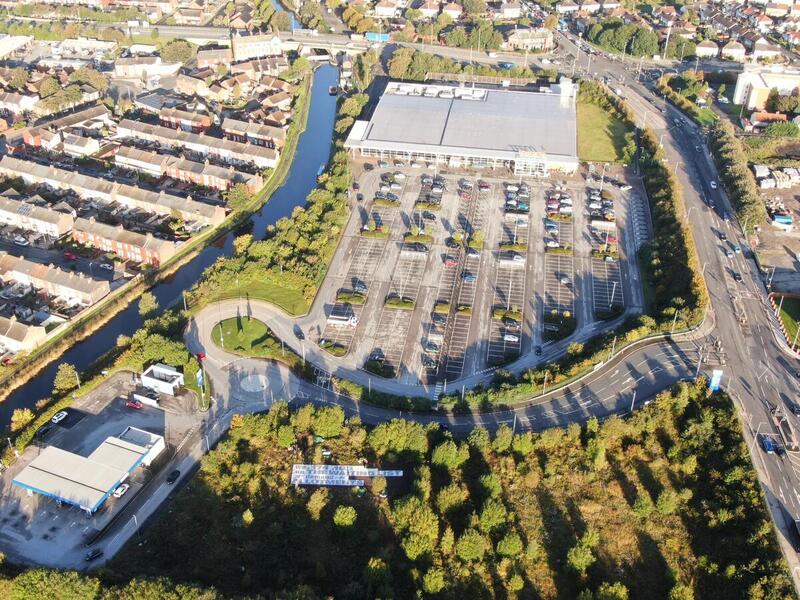
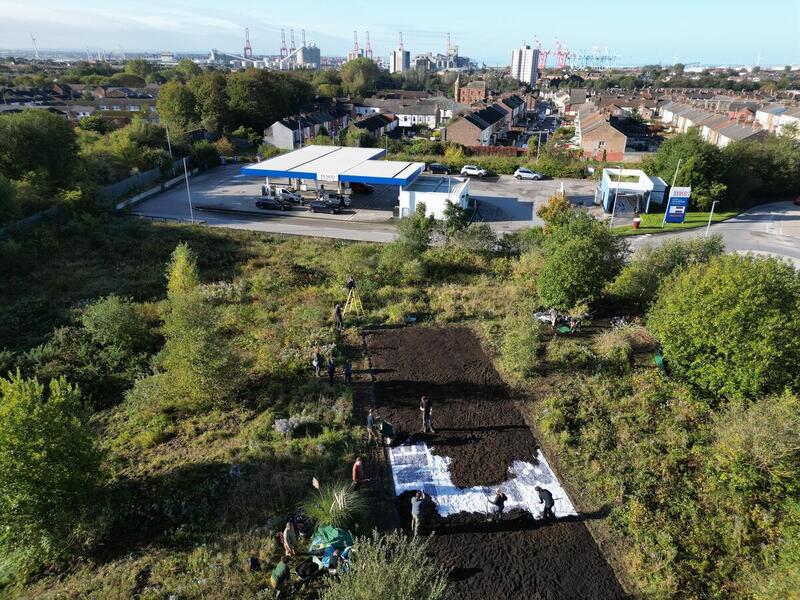
THE DIG-IN
Following the ceremonial ‘hand-in’ in London, The Waiting List artwork was transported to Liverpool where it was combined with larger sections and ‘dug-in’ on land owned by supermarket giant Tesco.
An area the size of a standard ‘10 pole’ allotment plot (10x25m) was strimmed, hoed, and then laid with seed paper sewn with blocks of White Clover, Red Fescue, Brown Mustard, Grazing Rye Grass and Sunflower, to support phytoremediation of the land and act as green manure, before being covered in 4 tonnes of compost.
Situated in the heart of the North Liverpool community, where there are currently 1355 applications for allotments, the act of land reclamation seeks to demonstrate how unused sites may be cultivated and used as allotments.

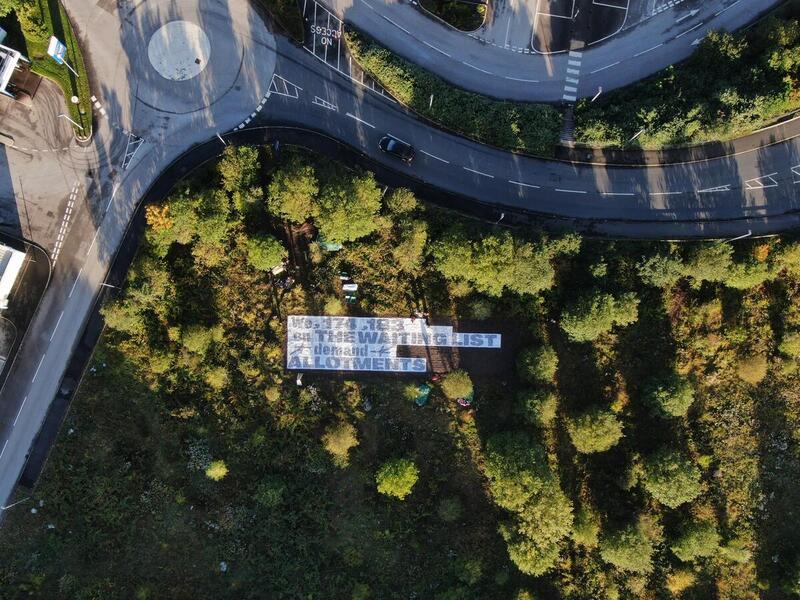

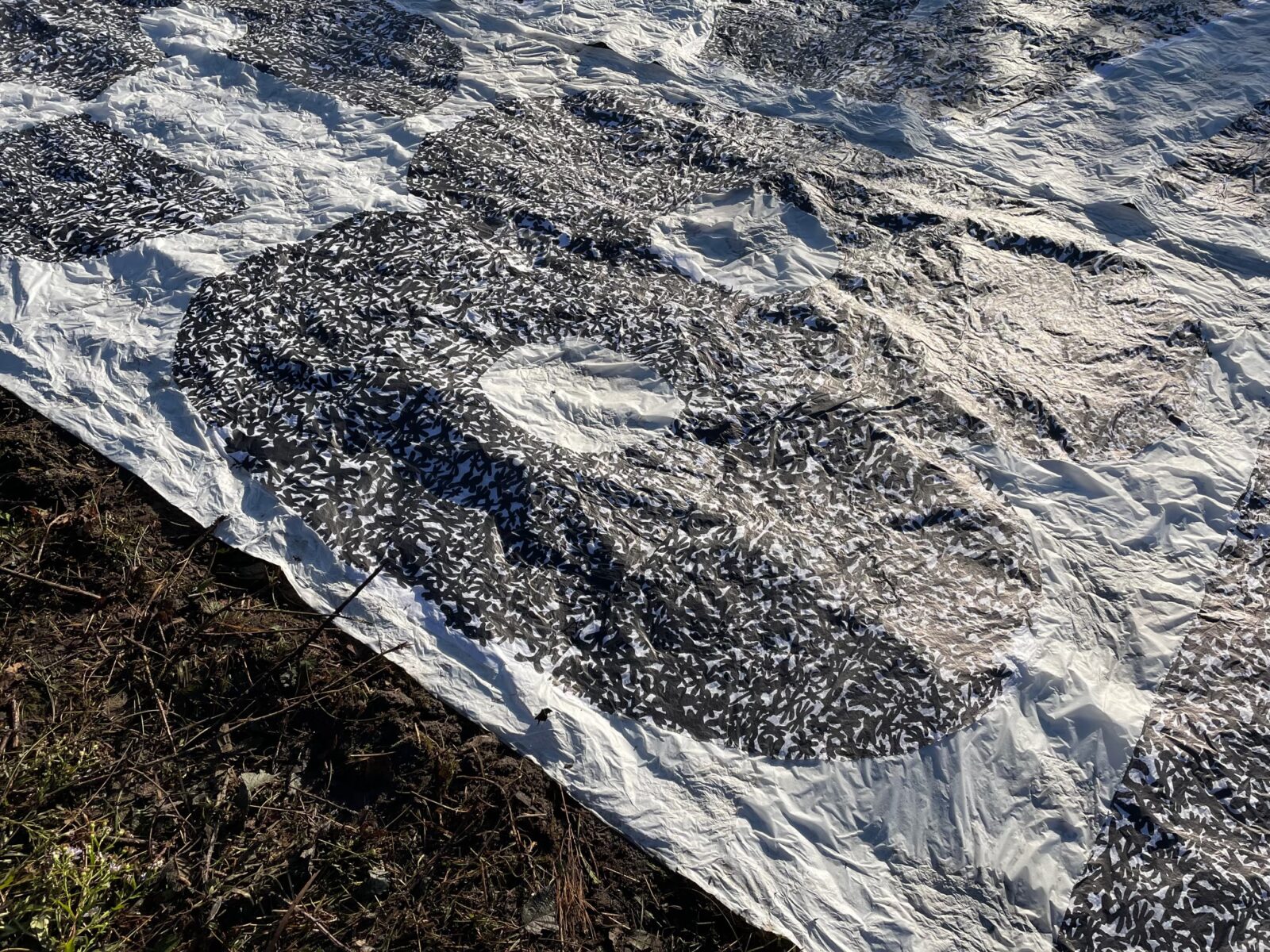

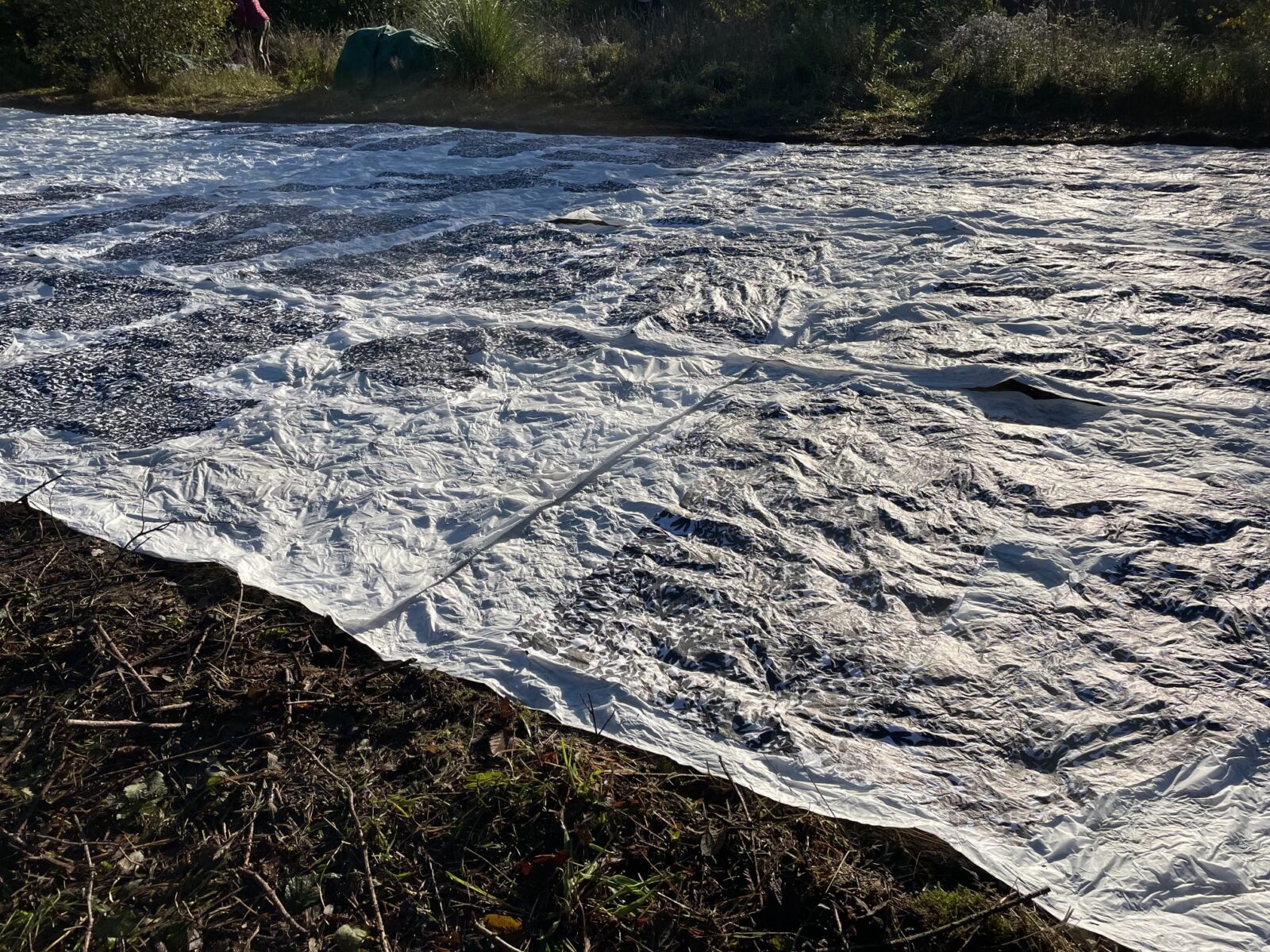


The land where the artwork was ‘dug-in’ was contaminated with hydrocarbons and heavy metals. The seed mix used in the handmade paper all catalyse a process known as phytoremediation, whereby plants clean pollutants from the soil and reduce contaminants. These plants also operate as ‘green manure’ which increases the fertility of the earth and supports the growth of fruit and vegetables. In this way, the call to action which is inscribed on the seed paper, and planted, becomes a self-composting and regenerative offering to the land and support of the sites potential for cultivation in the future.
The seed paper also included ash from an area of scorched Amazon rainforest, gathered by activists. The use of this as a material dug into the earth close to Liverpool’s port is a reminder of the UK’s reliance on imports of soya for meat and dairy production from South America, where it drives deforestation and human rights abuses. Liverpool docks is the main gateway for soya entering the UK via Cargill, a major industrial supplier of animal feed. Cargill’s plant is visible from the site where The Waiting List has been planted.
Allotments’ harvest feed us
Commune and delight
THE BIGGER PICTURE
Allotments matter. They promote self-sufficiency and food security by enabling people to cultivate their own fresh food. They reduce reliance on the industrial food system and have a history in the UK of feeding the nation during crises such as during the First and Second World Wars.
These small plots of land contribute to urban biodiversity, environmental sustainability and community life. They promote physical and mental well-being, and foster diverse communities who connect through their love of, and engagement with, the land.
Most people don’t realise that in the UK, access to an allotment is a statutory right. Section 23 of the 1908 Allotments Act proscribes local authorities to provide allotments at low rents, to ensure they remain accessible and affordable for all.
However, there are lengthy waiting lists across Great Britain. Our research shows that there are 174,183 applications on allotment waiting lists across Britain and the real figure is likely to be much higher as many lists have been closed to new applicants and our survey did not include allotment associations, amongst others. Our project seeks to draw attention to these growers in waiting, their desire to be in touch with the land and all that comes with this: more sustainable food systems, health and wellbeing, community cohesion, and increased biodiversity.
We, 174,183 on the waiting list, demand allotments.
What are we
waiting for?
We believe that allotments are an important part of the solution to many of the challenges we face today – food security, biodiversity and social isolation. This project seeks to draw attention to the right to allotments and the duty of councils to provide them, enshrined in law. This must happen alongside increasing long-term funding, powers and flexibility for councils and metro mayors so that they can deliver climate and nature goals and better involve local people in policy design and delivery.
We know that allotments are not a magic bullet and that the work required to meet the current demand is a huge task, but people are ready and waiting!.. and the latent potential of hundreds of thousands of people growing their own, with and for others, is something to aim for and make happen.
If you’re on the waiting list we want to hear from you, for a forthcoming publication we’re producing. We want to hear about why you want an allotment, but also how are you growing in the meantime – are you for example part of a community garden project or volunteering at an organic farm? There is a growing land justice movement and we want to share stories to catalyse new ways of growing and sharing food together. Email stories and images to info@fig.studio and we’ll be sharing a more detailed callout soon.
If you’re looking to get involved in local growing projects, allotments, or small scale growing projects see what’s happening in your area, explore growing in the margins and on abandoned land, or try some of these resources:
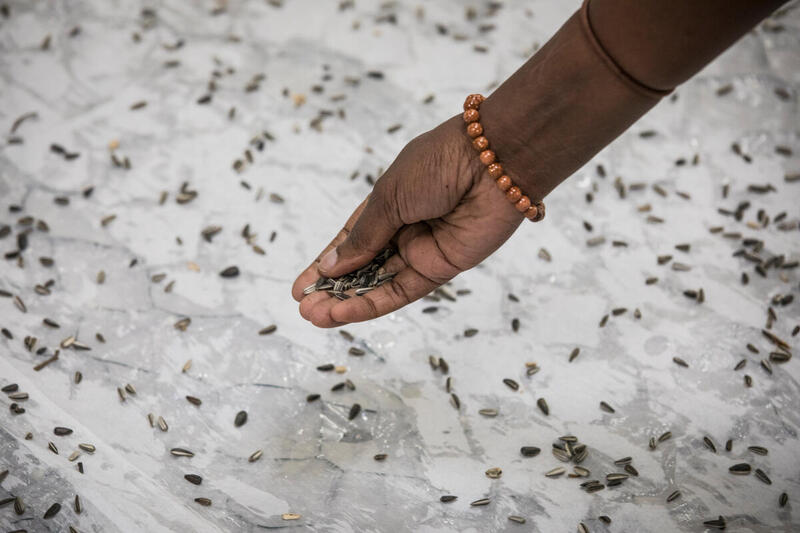
Thanks & Credits
The Waiting List was produced by JC Niala, Julia Utreras & Sam Skinner, a collective of artists who live and work in Oxford. JC is a poet, artist and nature writer, Julia is a socially engaged designer and runs Common Books, and Sam co-directs community arts project Fig Studio.
The project was made in close collaboration with the Bad Taste project team at Greenpeace: Hannah Davey, Sandra Ata, Daniela Montalto, Mary Jane Edwards, Kat Cotta, Alison Kirkman, Isabelle Povey, Imogen Putler, Anthony Lewis and Tom Micklewright.
Huge thanks to all the collaborators on the London ‘hand-in’ and Liverpool ‘dig-in’.
Many thanks also to: all the participants in the Bad Taste workshops; Associate Bad Taste artist, Harun Morrison; Rosie McLean, Carmen Rodriguez Macias, Kieran Cox and Fusion Arts (Oxford) who supported the making of the paper; and Jake Dow-Smith for webpage design.